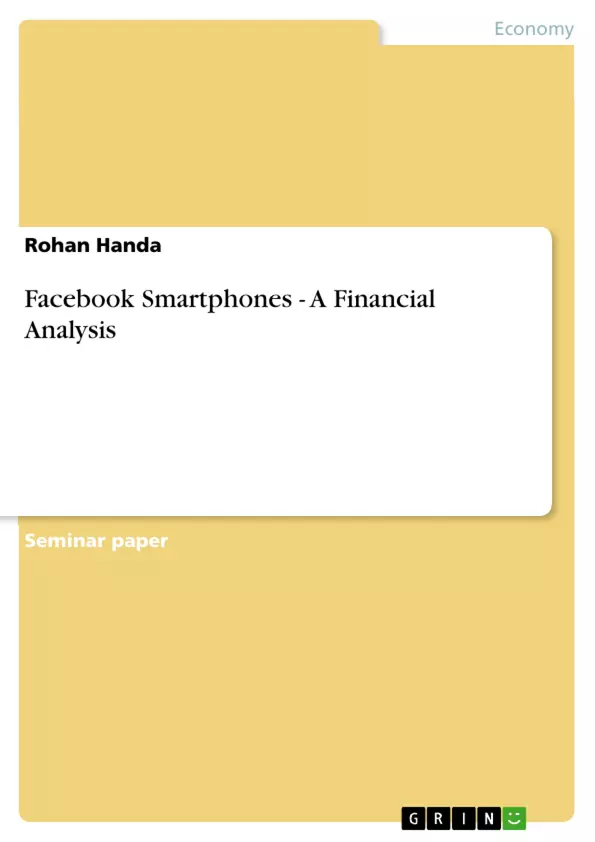The smart phone industry is growing by the day and we are at the threshold of unpacking it’s true worth by integrating it deeply with the social network. Our company, Facebook, has derived the opportunity to invest in the project that will enable us to incarcerate market share in the smart phone industry. The perseverance and hard work of our employees has made sure that we advance in this new venture. There are several alternatives that facilitate us to enter this market, which have been discussed in this report. To best estimate the possibility of our investment, the risk and profit factors have been estimated against a spectrum of parameters. These factors include manufacturing cost, revenues, market equity, marketing time, risk and profit evaluations. Some of the traditional industrial tools such as The NPV model and the Weighted Factor Scoring (WFS) Model have helped us with the strategic analysis. Using these tools, we were able to catalog the investments into the best fit, the most likely and the pessimistic cases. Eventually, based upon an in depth research and analysis, the most likely case was: collaborating with an OEM for joint development of the smart-phone.
Inhaltsverzeichnis (Table of Contents)
- Introduction
- Weighted Factor Scoring
- Best Case
- Most Likely Case
- Pessimistic Case
Zielsetzung und Themenschwerpunkte (Objectives and Key Themes)
This report analyzes the potential for Facebook to enter the smartphone market, assessing the feasibility of different investment options. The report aims to provide a comprehensive evaluation of the risks and rewards associated with each approach, ultimately recommending the most viable strategy for Facebook's entry into this rapidly growing sector. Key themes explored in the report include:- Strategic investment options for entering the smartphone market
- Risk and return analysis of different investment strategies
- Financial modeling using NPV analysis and Weighted Factor Scoring
- Market equity, brand impact, and potential growth opportunities
- Advantages and disadvantages of various investment approaches
Zusammenfassung der Kapitel (Chapter Summaries)
Introduction
The introduction outlines the potential of the smartphone market and Facebook's interest in securing a share of this growing industry. The report details the use of financial models, including NPV and WFS, to analyze various investment options.Weighted Factor Scoring
This section introduces the Weighted Factor Scoring (WFS) model employed to evaluate the different investment options. The WFS model considers key factors such as initial investments, operating costs, revenue generation, market equity, and time to market.Best Case
This chapter explores the option of Facebook developing its own smartphone, encompassing hardware and software manufacturing, marketing, and distribution. The analysis considers the potential benefits, including high return on investment, direct competition, and brand enrichment. However, it also acknowledges risks such as startup investments, dominance by existing players, and the need for continuous technology upgrades.Most Likely Case
This chapter focuses on a joint venture with an established smartphone manufacturer. The advantages include shared resources, reduced investment costs, and faster market entry. However, the report also outlines potential challenges such as partnership complexities, potential for imbalance, and brand dependence.Pessimistic Case
This chapter analyzes the option of brand labeling an existing smartphone. While offering low capital risk and the potential for capturing a mass market, it poses significant risks such as brand image damage, lack of product differentiation, and limited market share potential.Schlüsselwörter (Keywords)
This report focuses on the analysis of strategic investment options for Facebook to enter the smartphone market. Key concepts include NPV analysis, Weighted Factor Scoring, market equity, brand impact, risk assessment, and joint ventures.- Quote paper
- Rohan Handa (Author), 2011, Facebook Smartphones - A Financial Analysis, Munich, GRIN Verlag, https://www.grin.com/document/182278



